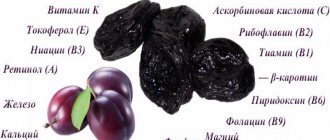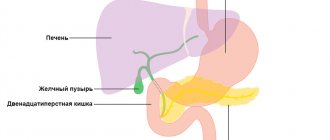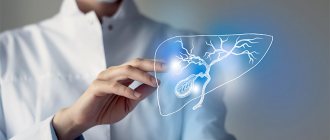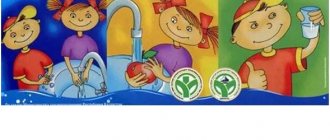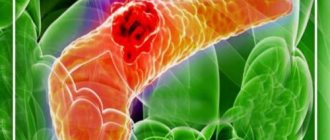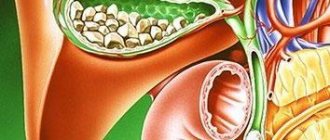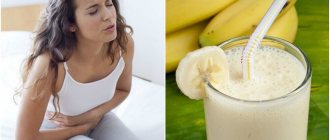Gallstone disease (GSD) is a multifactorial disease of the hepatobiliary system, which goes through several stages of development. The causes of cholelithiasis are disturbances in the metabolism of cholesterol and bilirubin with the formation of stones (calculi) in the gallbladder and its ducts. Recently, there has been an increase in incidence in men and even at a young age, although statistically more often the diagnosis is made in women. However, after 70 years, signs of gallstone disease are recorded in both women and men equally often.
Principles of treatment
Active treatment measures begin only when stones provoke acute inflammation or exacerbation of chronic inflammation, blocking the ducts of the bladder. There are several approaches and methods for treating cholelithiasis: conservative and surgical. Cholecystectomy (surgical removal of stones) is the second most common operation in the world, followed by appendectomy (removal of the appendix due to its inflammation - appendicitis). According to statistics, every year in the USA the operation is performed on more than half a million patients, in Russia - more than 110 thousand people.
Forms and symptoms
Gallstone disease is not a disease of one day, but a long process that has its own stages and forms of development. There are several clinical forms that differ in symptoms.
1. Latent. At this stage, the person is already a carrier of stones, but does not have any symptoms of gallstone disease. In this situation, stones in the bladder are detected only during a medical examination.
2. Dyspeptic. With this form, heartburn is observed, there may be bitterness in the mouth, heaviness in the stomach area, a feeling of nausea, and disturbances in bowel movements. Painful manifestations are possible when palpated in the epigastrium and hypochondrium area (on the right).
3. Painful. It is expressed by unpleasant attacks of biliary colic. They begin spontaneously, after eating a fatty meal or shaking. The pain is paroxysmal, stabbing or cramping, which is associated with the movement of the stone along the ducts. Vomiting, pressure, high pulse are possible, in some cases the skin and white membrane of the eyes turn yellow, urine (dark color) and stool (light color) change.
4. Gallbladder cancer. Possible occurrence is associated with a change in the chemical composition of bile, prolonged contact with stones, and infection.
Gallstone disease often complements gastrointestinal diseases: stomach ulcers, gastritis, and sometimes imitates others (coronary artery disease).
In children, gallstone disease can manifest itself as unexpected headaches, frequent nausea, dry and pale skin, and allergic reactions.
Conservative treatment methods
Conservative methods are aimed at relieving pain, as well as other symptoms and disorders.
After diagnosis and examination, during the acute period of the disease, medications are prescribed to relieve pain: non-steroidal anti-inflammatory drugs, antispasmodics, as well as drugs for the relief of dyspeptic and other disorders. If the pain syndrome does not stop within 5 hours, then inpatient treatment is indicated, where further treatment tactics will be determined.
In the chronic course of the disease, antispasmodics are the main drug for treating acute pain attacks, even between attacks. They will not only relieve pain, but also restore the ducts for the normal outflow of bile into the duodenum. This, by the way, will relieve dyspeptic disorders.
Diet for gallstone disease
Previously, recommendations were limited to sharply limiting fats to prevent the development and growth of gallstones. However, recent studies have shown that such recommendations are not as useful as previously thought, since rapid weight loss is a possible cause of complications. Today, doctors recommend maintaining a balanced and regular diet. This will not eliminate the presence of stones, but may have a positive effect on symptoms and pain. Limiting foods high in saturated fat will help reduce your risk of developing gallstones, as cholesterol is involved in their formation. The diet should include plant foods that will cover all the body's needs for vitamins, minerals and other nutrients that are necessary to maintain metabolic processes.
We must not forget about the proteins the body needs for recovery. But animal protein sources can be harmful because they put more strain on the gallbladder. Therefore, it is recommended to include easier-to-digest proteins in the diet; their sources can be:
- bird;
- fish;
- dairy products;
- nuts, etc.
For normal functioning of the digestive tract, you need to include fiber in your diet. Even outside of an exacerbation, you need to adhere to the same nutritional principles. Moderate consumption of natural ground coffee will help protect gallbladder function. Caffeine has various benefits for normal organ function. We must not forget the sources of calcium, vitamin C, folic acid and magnesium.
Methods and means that “break” stones
If the stones are made of cholesterol, the doctor will prescribe medications that will literally help dissolve the stones. Taking medications is long-term, it may take more than one month. For some patients, this is the only possible treatment. There are other techniques that will help break up stones and remove them from the body - lithopsy.
These are ultrasonic shock waves aimed at stones.
If the manipulation is successful, the stones are crushed and safely passed along with the feces. However, this procedure is not performed by everyone; it has a lot of indications and contraindications. Another surgical, but not radical, treatment method is retrograde cholangiopancreatography,
which is performed under local anesthesia. During the procedure, a flexible fiber-optic camera and endoscope are inserted through the mouth and directed into the gallbladder. Special probes at the end of the tube apply current to the ducts of the bladder, expanding them, and this also allows you to remove or break up stones so that they can pass into the intestines.
Surgical methods of treatment
Surgery to remove the gallbladder is called cholecystectomy. And most often it is performed using endoscopic methods, but in the presence of large stones, pronounced inflammation that cannot be stopped, open abdominal surgery is recommended. The advantages of the endoscopic technique are that it is a less invasive operation and the postoperative recovery period is shorter. If it is decided to undergo abdominal surgery, the patient spends a long time in the hospital, followed by a long course of rehabilitation and treatment.
Possible complications
Blocked ducts can cause acute pancreatitis and jaundice, and this is a direct indication for surgery. In the postoperative period, some patients may complain of frequent bloating, dyspeptic disorders, and digestive disorders, especially if the diet contains foods high in fat. It is important to be able to promptly recognize possible symptoms of complications of gallstone disease:
- Biliary colic
When a calculus clogs the duct, it prevents contraction of the gallbladder, which causes severe pain - this is colic. The pain is felt in the upper abdomen, but radiates to the central part of the abdomen. It usually appears after eating and persists for several hours and then subsides. In some cases, the pain may persist for a day, but more often the attack is wave-like: the pain arises and then subsides.
- Infection
Blocked ducts can cause inflammation and infection. As a result, the following symptoms appear: fever, chills, severe pain, dyspeptic disorders, etc.
- Obstructive jaundice
Requires surgical removal of a stone in the gall bladder, which disrupts the flow of bile into the intestines.
- Pancreatitis
Even small stones can block the pancreatic duct or cause the backflow of bile into the duct, which predisposes to the development of pancreatitis, that is, inflammation of the pancreas.
Prevention
Age, nutrition, gender are predisposing factors for the development of cholelithiasis, and these factors cannot be controlled, however, there are recommendations that will reduce the likelihood of its development.
First of all, this is nutrition: balanced, rich in vegetables and fruits. It is known that people who adhere to a vegetarian diet have a lower risk of developing cholelithiasis. It is recommended to control weight, because rapid weight loss increases the risk of developing the disease and even complications. Text: Yulia Lapushkina.
Treatment of cholelithiasis (GSD) is available in the following branches:
Treatment of cholelithiasis (GSD) in the Primorsky region
Address: St. Petersburg , Primorsky district, st. Repisheva, 13
Treatment of cholelithiasis (GSD) in the Petrograd region
Address: St. Petersburg , Petrogradsky district, st. Lenina, 5
Treatment of cholelithiasis (GSD) in Vsevolozhsk
Address: Vsevolozhsk , Oktyabrsky Prospekt, 96 A
The liver is directly responsible for removing toxins from the body, and the gallbladder ensures the uninterrupted operation of this process. Violation of its performance leads to illness and the direct need for urgent treatment.
Cholelithiasis or cholelithiasis - refers to a condition that is caused by a deterioration in the functioning of the gallbladder. Due to inflammation in the bladder, with stagnation of bile, improper metabolism of cholesterol and bilirubin, the amount of natural metabolites and toxins increases, and stones form.
Gallstone disease: prevention and prognosis
Prevention of cholelithiasis includes minimizing factors that lead to cholesterolemia, increased bilirubinemia and possible bile stagnation. It is necessary to continuously maintain an acceptable healthy diet, fluid balance, engage in moderate physical activity, undergo annual examinations, and avoid concomitant diseases. Having carried out high-quality treatment of a gallstone after its removal, you must carefully monitor your diet, do not drink alcohol and, if possible, avoid taking strong antibiotics. If all of the above recommendations are followed, the prognosis for recovery will be positive.
Immediate contact with the clinic’s doctors minimizes the risk of negative complications of cholelithiasis and promotes a quick return to active life.
Cost of treatment for cholelithiasis (GSD):
| Services list | Price in rubles | |
| Saint Petersburg | Vsevolozhsk | |
| Initial appointment with a 1st stage gastroenterologist | 1850 | 1500 |
| Repeated appointment with a 1st stage gastroenterologist | 1650 | 1300 |
| Initial appointment with a gastroenterologist, stage 2 | 2100 | — |
| Repeated appointment with a 2nd stage gastroenterologist | 1900 | — |
| Initial appointment with a gastroenterologist, leading specialist | 2500 | — |
| Repeated appointment with a gastroenterologist, leading specialist | 2300 | — |
| Initial appointment with gastroenterologist Dmitrieva Yu.E. | 2700 | — |
| Repeated appointment with gastroenterologist Dmitrieva Yu.E. | 2500 | — |
| Initial appointment with gastroenterologist Kizhlo L.B./Rovny V.B. | 3000 | 3000 |
| Repeated appointment with gastroenterologist Kizhlo L.B./Rovny V.B. | 2700 | 2700 |
| Initial appointment with gastroenterologist Chernykh M.D. | 3300 | — |
| Repeated appointment with gastroenterologist Chernykh M.D. | 2900 | — |
